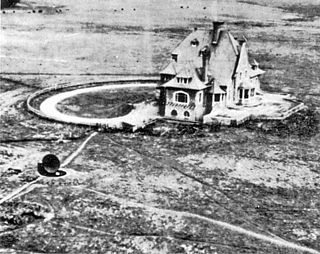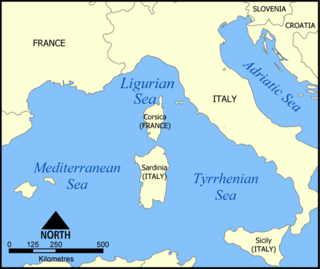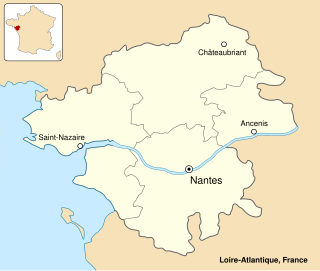 W
WCase Anton was the military occupation of France carried out by Germany and Italy in November 1942. It marked the end of the Vichy regime as a nominally-independent state and the disbanding of its army, but it continued its existence as a puppet government in Occupied France. One of the last actions of the Vichy armed forces before their dissolution was the scuttling of the French fleet in Toulon to prevent it from falling into Axis hands.
 W
WOperation Aquatint was the codename for a failed raid by British Commandos on the coast of occupied France during the Second World War. The raid was undertaken in September 1942 on part of what later became Omaha Beach by No. 62 Commando, also known as the Small Scale Raiding Force.
 W
WOperation Basalt was a small British raid conducted during World War II on Sark during the German occupation of the Channel Islands.
 W
WThe Battle of Bir Hakeim took place at Bir Hakeim, an oasis in the Libyan desert south and west of Tobruk, during the Battle of Gazala. The 1st Free French Brigade under Général de brigade Marie-Pierre Kœnig defended the position from 26 May – 11 June against much larger Axis forces of Panzerarmee Afrika commanded by Generaloberst Erwin Rommel. The Panzerarmee captured Tobruk ten days later.
 W
WOperation Biting, also known as the Bruneval Raid, was a British Combined Operations raid on a German coastal radar installation at Bruneval in northern France during the Second World War, on the night of 27–28 February 1942.
 W
WOperation Jubilee or the Dieppe Raid was an Allied amphibious attack on the German-occupied port of Dieppe in northern France, during the Second World War. Over 6,050 infantry, predominantly Canadian, supported by a regiment of tanks, were put ashore from a naval force operating under protection of Royal Air Force (RAF) fighters.
 W
WThe Empire Defense Council was the embodiment of Free France which constituted the government from 1940 to 1941. Subsequently, this role was assumed by the French National Committee.
 W
WFree French Africa is the political entity which collectively represents the colonial territories of France on African soil which rallied to Free France formed by General de Gaulle during the Second World War in order to continue the struggle against Nazi Germany and the Axis forces.
 W
WThe French National Committee was the coordinating body created by General Charles de Gaulle which acted as the government in exile of Free France from 1941 to 1943. The committee was the successor of the smaller Empire Defense Council.
 W
WThe Government of Vichy France was the collaborationist ruling regime or government in Nazi-occupied France during the Second World War. Of contested legitimacy, it was headquartered in the town of Vichy in occupied France, but it initially took shape in Paris under Maréchal Philippe Pétain as the successor to the French Third Republic in June 1940. Pétain spent four years in Vichy and after the Allied invasion of France, fled into exile to Germany in September 1944 with the rest of the French cabinet. It operated as a government-in-exile until April 1945, when the Sigmaringen enclave was taken by Free French forces. Pétain was brought back to France, by then under control of the Provisional French Republic, and put on trial for treason.
 W
WItalian-occupied Corsica refers to the military occupation by the Kingdom of Italy of the island of Corsica during the Second World War, from November 1942 to September 1943. After an initial period of increased control over Corsica, by early spring 1943 the Italian forces started losing territory to the local Maquis. In the aftermath of the Armistice of Cassibile, the Italian capitulation to the Allies, Italian units sided with the new German garrison troops or the local Maquis and Free French Forces.
 W
WLe Juif et la France was an anti-Semitic propaganda exhibition that took place in Paris from 5 September 1941 to 15 January 1942 during the German occupation of France in the Second World War. A film version of the exhibition came out in French cinemas in October 1941.
 W
WThe clandestine press of the French Resistance was collectively responsible for printing flyers, broadsheets, newspapers, and even books in secret in France during the German occupation of France in the Second World War. The secret press was used to disseminate the ideas of the French Resistance in cooperation with the Free French, and played an important role in the liberation of France and in the history of French journalism, particularly during the 1944 Freedom of the Press Ordinances.
 W
WThe liberation of France in the Second World War was accomplished through diplomacy, politics, and the combined military efforts of the Allied Powers, Free French forces in London and Africa, and the French Resistance.
 W
WThe Battle of Madagascar was a British campaign to capture the Vichy French-controlled island Madagascar during World War II. The seizure of the island by the British was to deny Madagascar's ports to the Imperial Japanese Navy and to prevent the loss or impairment of the Allied shipping routes to India, Australia and Southeast Asia. It began with Operation Ironclad, the seizure of the port of Diego-Suarez near the northern tip of the island, on 5 May 1942.
 W
WOperation Myrmidon was the planned raid during the Second World War by No. 1 Commando and No. 6 Commando in April 1942. This operation was an abortive raid on the Adour Estuary in south-western France. The plan was to disrupt road and rail transport between France and Spain by landing approximately 3,000 troops, consisting of two commandos, No. 1 and No. 6, who would be followed up by one and a half Royal Marine battalions along with an armoured regiment and a motor battalion. After embarking on the transport ships Queen Emma and Princess Beatrix, the force spent a month sailing off the French coast disguised as Spanish merchant ships. On 5 April the ships approached the mouth of the estuary in order to carry out the landing. However, amid bad weather, they encountered a sandbar that they had not expected and were unable to pass it; the raid was called off and the ships returned to the United Kingdom.
 W
WThe St Nazaire Raid or Operation Chariot was a British amphibious attack on the heavily defended Normandie dry dock at St Nazaire in German-occupied France during the Second World War. The operation was undertaken by the Royal Navy (RN) and British Commandos under the auspices of Combined Operations Headquarters on 28 March 1942. St Nazaire was targeted because the loss of its dry dock would force any large German warship in need of repairs, such as Tirpitz, sister ship of Bismarck, to return to home waters by running the gauntlet of the Home Fleet of the Royal Navy and other British forces, via the English Channel or the North Sea.
 W
WThe scuttling of the French fleet at Toulon was orchestrated by Vichy France on 27 November 1942 to prevent Nazi German forces from taking it over. The Allied invasion of North Africa had provoked the Germans into invading the territory administered by Vichy, the neutral zone according to the Armistice of 1940. The Vichy Secretary of the Navy, Admiral François Darlan, defected to the Allies, who were gaining increasing support from servicemen and civilians. His replacement, Admiral Gabriel Auphan, guessed correctly that the Germans were aiming to seize the large fleet at Toulon, and ordered it to be scuttled.
 W
WThe Union générale des israélites de France was a body created by the antisemitic French poltician Xavier Vallat under the Vichy regime after the Fall of France in World War II. UGIF was created by decree on 29 November 1941 following a German request, for the express purpose of enabling the discovery and classification of Jews in France and isolating them both morally and materially from the rest of the French population. It operated in two zones: the northern zone, chaired by André Baur, and the southern zone, under the chairmanship of Raymond-Raoul Lambert.
 W
WThe Vel' d'Hiv' Roundup was a mass arrest of foreign Jewish families by French police and gendarmes at the behest of the German authorities, that took place in Paris on 16 and 17 July 1942. According to records of the Préfecture de Police, 13,152 Jews were arrested, including more than 4,000 children.
 W
WVichy France is the common name of the French State headed by Marshal Philippe Pétain during World War II. The regime was authoritarian, xenophobic, antisemitic and traditionalist in nature. Officially independent, it adopted a policy of collaboration with Nazi Germany, which occupied its northern and western portions before occupying the remainder of Metropolitan France in November 1942. Though Paris was ostensibly its capital, the Vichy government established itself in the resort town of Vichy in the unoccupied "Free Zone", where it remained responsible for the civil administration of France as well as its colonies.